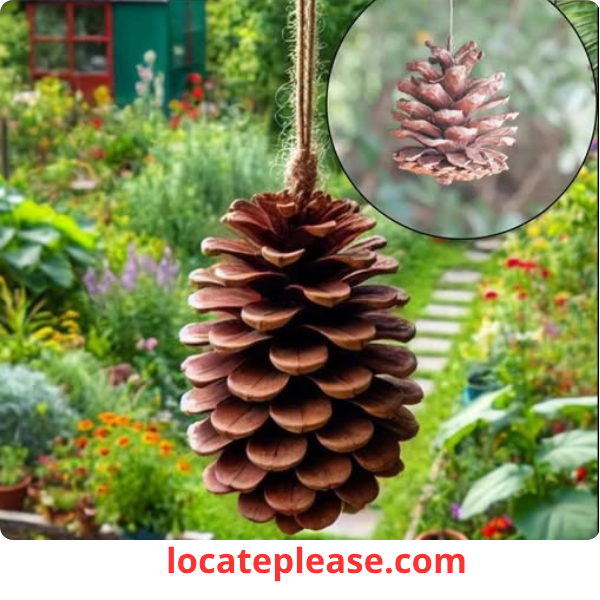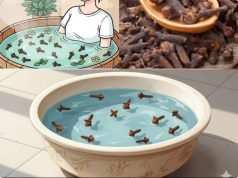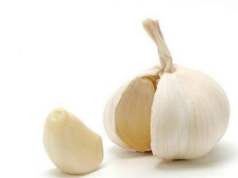If you’re a gardener who loves simple, sustainable solutions, here’s a game-changing tip:
👉 Stop filling the bottom of your pots with rocks or foam — start using pinecones instead.
Yes — those woody, aromatic cones that litter your yard every fall aren’t just for crafts or holiday décor.
They’re a natural, free, and highly effective gardening hack that can improve drainage, save soil, and boost root health — all while reducing waste.
And the best part?
You’ve probably already got a stash in your backyard.
Why Pinecones Belong in Your Planters
Pinecones are the seed-bearing structures of pine trees — lightweight, fibrous, and full of tiny air pockets.
These qualities make them perfect for container gardening, especially as a bottom layer filler.
Unlike heavy rocks or non-biodegradable foam, pinecones offer a smart, eco-friendly alternative that supports healthy plant growth — naturally.
7 Surprising Benefits of Using Pinecones in Planters
1. Improves Drainage — No More Root Rot
One of the biggest threats to potted plants?
Waterlogged soil.
When excess water can’t escape, roots suffocate, leading to root rot, mold, and plant death.
Pinecones create natural air gaps at the bottom of your planter, allowing water to drain freely while preventing soil from clogging the drainage holes.
✅ Result: Healthier roots, happier plants.
🌿 Ideal for: Balcony gardens, hanging baskets, and any container where weight and drainage matter.
2. Reduces Soil Use — Save Money & Space
High-quality potting mix isn’t cheap — especially when filling large decorative pots.
Pinecones act as a natural filler, taking up space at the bottom where deep soil isn’t needed.
✅ You can cut soil use by 30–50% — saving money and reducing container weight.
💡 Tip: Great for tall planters where only the top 6–8 inches are used for roots.
3. Boosts Airflow & Root Oxygenation
Roots need oxygen as much as they need water.
Pinecones’ porous, open structure promotes air circulation in the lower part of the pot, helping roots breathe and grow stronger.
This is especially helpful for:
- Herbs
- Succulents
- Shallow-rooted flowers
✅ Better airflow = fewer fungal diseases and stronger plants.
4. Slowly Enriches the Soil Over Time
While pinecones decompose very slowly, they do break down over months — especially in moist conditions.
As they do, they:
- Release organic matter into the soil
- Feed beneficial soil microbes
- Improve long-term soil structure
Unlike synthetic fillers, pinecones give back to your plants — quietly and steadily.
5. Eco-Friendly & Sustainable
Many gardeners use broken pottery, Styrofoam, or plastic to fill large pots — but these materials:
- Don’t break down
- Can leach chemicals
- End up in landfills
Pinecones are:
- 100% biodegradable
- Chemical-free
- Free and abundant (especially in pine-growing areas)
- Safe for edible plants and organic gardens
👉 A true win for sustainable gardening.
6. Naturally Deters Some Pests & Fungi
The resin and structure of pinecones can help discourage certain pests:
- Fungus gnats avoid dry, airy base layers
- Ants and slugs are less likely to nest in the pinecone zone
- Natural compounds in pine and cedar repel soft-bodied insects
It’s not a pest control miracle — but it helps create a less hospitable environment for troublemakers.
7. Works for Indoor & Outdoor Plants
Pinecones aren’t just for outdoor gardens.
They’re perfect for:
- Houseplants — reduce soil volume and improve drainage
- Self-watering planters — create a breathable reservoir layer
- Pots without drainage holes — pair with charcoal and fabric for a wicking system
- Seasonal displays — functional and rustic-looking
Even in winter, they keep working — silently supporting your plants from below.
How to Use Pinecones in Planters: Step-by-Step
Step 1: Collect & Prep Your Pinecones
- Gather fallen pinecones (avoid moldy or insect-infested ones)
- Shake off dirt and debris
- Optional: Bake at 200°F (93°C) for 20–30 minutes to kill bugs and open the scales
- Let cool and dry completely
Step 2: Layer in the Planter
- Place a 2–4 inch layer of pinecones at the bottom (thicker for larger pots)
- Nest them to form a stable, airy base
Step 3: Add a Barrier (Optional)
- Lay landscape fabric or burlap over the pinecones to keep soil from falling through
Step 4: Add Soil & Plant
- Fill with potting mix as usual
- Plant your herbs, flowers, or veggies
- Water and watch how quickly it drains — no more soggy soil!
Best Plants for Pinecone Planters
Pinecones work best with plants that have shallow or moderate root systems, such as:
- Herbs: Rosemary, thyme, oregano, chives
- Leafy greens: Lettuce, spinach, arugula
- Annuals: Pansies, marigolds, petunias
- Succulents & cacti
- Houseplants: Pothos, spider plant, philodendron
❌ Avoid with:
- Deep-rooted veggies (carrots, parsnips)
- Plants that love constant moisture (ferns, taro)
- Large fruiting plants (unless used as a shallow base layer)
Common Questions, Answered
Q: Will pinecones rot and harm my plants?
A: No — they decompose very slowly and actually enrich the soil over time.
Q: Do I need to sterilize them?
A: For indoor plants, baking or a vinegar soak helps remove pests and mold spores.
Q: How long do they last?
A: 1–2 growing seasons outdoors; longer indoors.
Q: Can I compost old pinecones?
A: Yes — but they break down slowly. Crush them first for faster composting.
Bonus: Creative Garden Uses for Extra Pinecones
- Mulch around acid-loving plants (blueberries, azaleas)
- Bug hotels — stack with twigs and hollow stems
- Compost booster — adds carbon-rich “browns”
- Raised bed filler — layer below soil to improve drainage
- Natural décor — seasonal centerpieces that later go to the garden
Final Thoughts: Nature’s Perfect Planter Hack
Pinecones may seem like simple forest debris — but in the garden, they’re quiet heroes.
They save soil, improve drainage, support roots, and reduce waste — all while being free, natural, and sustainable.
So next time you see pinecones scattered under a tree, don’t rake them away.
Collect them.
Clean them.
Put them to work.
Because sometimes, the best gardening tools aren’t in the shed —
They’re on the ground, waiting to be rediscovered.
Smart gardening isn’t about spending more — it’s about using what nature provides.










